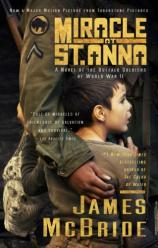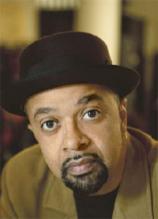Reading Group Guide
Discussion Questions
Miracle at St. Anna

1. Why do you think McBride chose to frame his WWII story with the post office episode that takes place in 1983? How does this narrative frame clarify or comment on the picture of the war it contains?
2. What knowledge of the African American experience in WWII did you bring to Miracle at St. Anna? How did reading the novel deepen your understanding of this aspect of the war?
3. In a fiery argument with Stamps, Bishop says, "So now the great white father sends you out here to shoot Germans so he can hang you back home for looking at his woman wrong.... The Negro don't have doodleysquat to do with this...this devilment, this war-to-free-the-world shit" [p. 147-9]. In what ways does the war reveal the racism and hypocrisy entrenched in American society? How are the black soldiers treated by their white commanders? How are they treated by the Italians? Is Bishop's cynicism justified?
4. Why does Train become so attached to the young Italian boy he rescues? What does the boy offer him that he's never had before? What does Train learn from him? Is the boy, as Train claims, "an angel"?
5. The novel is titled Miracle at St. Anna but several miracles occur in the book. Which of these is the miracle referred to in the title? What effects do these events have on those who experience them? Do you think McBride wants us to read them as divine manifestations of God's power or simply as remarkable occurrences?
6. Why does Rudolfo betray the Italian partisan hero Peppi, the "Black Butterfly"? What are the consequences of that betrayal? How is Rudolfo's treachery revealed?
7. Why does McBride tell the history of the statue's head that Train carries with him throughout the war? What does this history add to the story? Is it possible to read the entire novel as a complex elaboration of that statue's journey from a sixteenth-century marble mountain in Carrara, Italy, to late twentieth-century New York City?
8. In the Acknowledgments, McBride says that the book began when he was boy listening to his stepfather and step-uncles tell stories about the war. What struck him most forcefully was not the stories themselves but his Uncle Henry's pride in his service. In what ways does the novelóand its stories of the Buffalo Soldiers of the 92nd Divisionóreflect that pride?
9. Train, Stamps, Bishop, and Hector are four distinctive and vividly drawn characters. How are they different from one another? What varying attitudes do they have about the war? What larger themes does McBride address through the conflict between Bishop and Stamps?
10. In a moment of mistrust of the Italians, Hector thinks: "He was glad he didn't love anybody. It was easier, safer, not to love somebody, not to have children and raise kids in this crummy world where a Puerto Rican wants to kill an innocent woman for doing nothing more than trying to help him" [p. 138]. Why would Hector feel this way? In what sense is the entire novel about love and the risk of loving?
Miracle at St. Anna
- Publication Date: September 2, 2008
- Paperback: 320 pages
- Publisher: Riverhead Trade
- ISBN-10: 1594483604
- ISBN-13: 9781594483608








